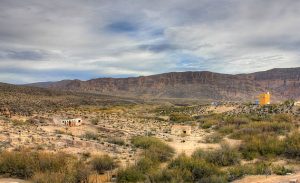Locating Hidden Graves in Mexico
 For more than 10 years, and with regularity, Mexican authorities have been discovering mass graves, known as fosas clandestinas, in which hundreds of bodies and piles of bones have been found. The casualties are attributed broadly to the country’s “drug war,” although the motivations and perpetrators behind the mass murders are often unknown.
For more than 10 years, and with regularity, Mexican authorities have been discovering mass graves, known as fosas clandestinas, in which hundreds of bodies and piles of bones have been found. The casualties are attributed broadly to the country’s “drug war,” although the motivations and perpetrators behind the mass murders are often unknown.
Recently, HRDAG collaborated with two partners in Mexico—Data Cívica and Programa de Derechos Humanos of the Universidad Iberoamericana—to model the probability of identifying a hidden grave in each county (municipio). The model uses an set of independent variables and data about graves from 2013 and 2014 to predict in which counties graves will be found. With perfect precision (i.e., no false positives and no false negatives), the model predicts whether one or more clandestine graves will be discovered.
“Mexico is full of tragedies and uncertainties,” said Mónica Meltis, project manager at Data Cívica. “With the accumulation of homicides, there is also a great number of people disappeared. But there are also groups of families trying to find the truth about their missing loved ones. This is our way to help them get closer to that truth.”
Jorge Ruiz Reyes, assistant research at the human rights program at Universidad Iberoamericana, collaborated with HRDAG and Data Cívica on the project. “The importance of this model lies in providing a tool to the families that are searching these clandestine graves across the country, in order to exhume the truth and recover the identities and histories of the persons that lie in them,” said Ruiz.
For a detailed technical discussion of the model, and how to interpret the results, read Patrick’s full post here. The team at the Iberoamericana created the database of clandestine graves, and they wrote about this analysis in a blogpost here, and the team at Data Cívica wrote about this analysis in a blogpost here.
Moving forward, the next task is to map the clandestine graves from 2016, retest the model for that year, and use the predictions to identify hidden graves in 2017. If we can do that, we can help to shape the search for missing people, focusing on the most likely locations to find graves.
Image: The town of Boquillas del Carmen. Yinan Chen, 2015. Wikimedia.
